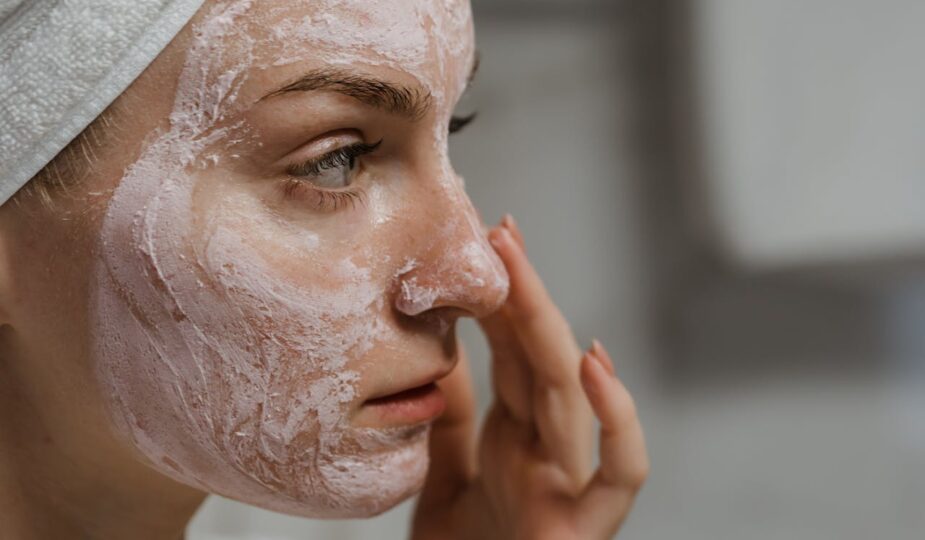
The Cold is Here: How to Care for Our Skin in Winter
With the arrival of autumn, colder days are upon us, and our skin begins to require different care. Exposure to low temperatures can significantly alter and modify the production of sebum and lipids while reducing water retention.
Why Does the Skin Dry Out?
In winter, the low temperatures lead to reduced blood flow and less oxygenation of the skin, causing it to appear paler and lose its elasticity and firmness. As a result, we may notice flakiness, roughness, fine wrinkles due to dehydration, and increased reactivity such as sensitivity and redness.
The areas most sensitive to the effects of winter are the cheeks, lips, neck, décolletage, and hands. Therefore, taking care of facial skin is a priority, especially for those with sensitive skin.
That’s why the facial skincare routine should change when the temperatures drop. It’s important to increase the use of ingredients that create a reservoir of water, such as hyaluronic acid, and lipids like ceramides.
These tips can be useful in dealing with challenges during the colder months.
External Hydration
Every skin type has different needs and requires different products and application frequencies. However, as a general rule, it’s advisable to hydrate the skin daily and after each bath.
Before taking a bath, it’s important to remember that although it may be tempting to increase the water temperature during showers and washes in cold weather, it’s best to avoid it and always use lukewarm water. Hot water can cause a loss of skin lubrication. Additionally, to avoid disrupting the natural oils that maintain hydration, it’s important to avoid very long or frequent showers and always dry off thoroughly.
Internal Hydration

It’s not only important to hydrate the skin externally but also internally. Another fundamental measure is to drink enough water, at least between 1.5 and 2 liters throughout the day.
Similarly, nutrition also plays a role in hydrating our bodies. Pay attention to the intake of vitamin C and antioxidants. Additionally, avoid alcohol and tobacco.
The skincare routine won’t change much in terms of the order or application of products; it will mainly vary in product characteristics and consistency. The steps to follow will remain the same:
Facial Cleansing: This remains the first step to remove impurities and excess oil.
Apply high-concentration solutions tailored to your skin’s specific needs: anti-aging, repairing, balancing for oily skin, or firming. They must contain a high concentration of niacinamide, which is particularly suitable for stressed and irritated skin.
Apply lotions. During winter, with temperature fluctuations between indoors and outdoors, drier, delicate, or sensitive skin may experience redness, tightness, or a feeling of heat. Lotions are great allies to apply at any time of the day to soothe these sensations and reinforce hydration.
Moisturization: Depending on your skin type, choose lighter or emollient textures and apply them to your face and neck. This is a good time to incorporate heavier textures that may feel uncomfortable during the summer.
Sunscreen: It’s important to use sunscreen every day, year-round, even on cloudy days, to prevent premature aging and spots.
But there are three areas, due to their thinner and more delicate skin composition, that require special care and attention.
Lips: Normally, lips are moistened by saliva, but in demanding weather conditions such as extreme cold, very low humidity, or high heat, you’ll need moisturizing and emollient products. In such cases, you can follow these recommendations:
- Protect your lips with lip balm and cover them with a scarf.
- Avoid licking your lips, as this can make them even drier.
- Stay hydrated by drinking enough water.
- Use a humidifier if the indoor environment is dry.
- Breathe through your nose, not your mouth.
Eyelids: This is one of the areas where wrinkles due to dehydration appear first, as it retains less moisture. To protect them, apply a product specifically designed for this area, such as serums and eye creams, using your ring finger with gentle circular motions and without applying pressure.
Hands: Anatomically, the skin on the hands has a different structure from the rest of the body, with less ability to retain moisture, making it prone to dryness. Therefore, it’s crucial to use emollient products to restore its structure.
Invest in Skincare Products

Invest in at least half of your skincare products when possible. Knowing your skin type and its characteristics is essential for selecting the best skincare products and creating a daily winter skincare routine that delivers the desired results, allowing your natural beauty to shine.
The range of beauty products for women is extensive, so it’s important to be informed about the features, benefits, and contraindications of the products you’re interested in incorporating into your skincare routine.
It’s important to remember that for any skincare routine, it’s necessary to consult with a professional who can recommend products based on your skin type and its characteristics.
And remember that, even though the rest of your body is covered by coats, you should also take care of and moisturize your skin daily to prevent dryness, cracking, or itching.









